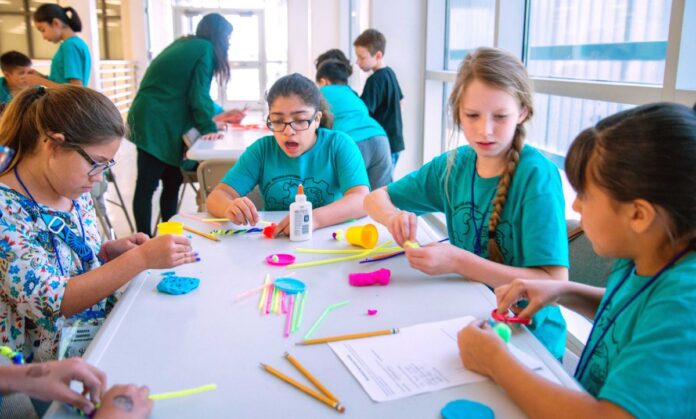HARLINGEN — They caught the thermals across the gray skies, then took a ride through the bloodstream of the human body.
About 100 children explored a variety of topics related to robotics yesterday at the Dr. Abraham P. Cano Freshman Academy.
They were seriously psyched about operating drones, using 3D printers launching rockets.
“We researched drones and what they are used for, what people can do with drones and how they work,” said Hailee Mendoza, 11.
She and the other children had spent the morning learning about drones before breaking for lunch.
The session with drones had been organized by Border Kids Code as part of a STEM festival organized by the City of Harlingen Parks and Recreation Summer Program. The afternoon session organized by Nerdvana would include rockets and coding activities.
“We are going to be teaching kids a little bit more about virtual reality,” said Whiten Patel, president and founder of Nerdvana, which is based in Edinburg.
“We are also doing rocket launchers and 3D printing and design,” he said.
The kids had enjoyed operating the small, palm-sized drones. Hailee herself didn’t get a chance to fly one, but she watched others fly a small distance.
“It’s a lot of fun,” she added.
Carlos Peters thought so, too.
“They are really fun flying the drones,” said Carlos, 11. “You learn how to program them to keep the altitude at the proper level.”
He was also looking forward to visiting Nerdvana later in the day.
“I am excited to do the 3D printing,” Carlos said. “I’ve never seen a 3D printer.”
The activities were first-time experiences for many of the kids, said Marcos Silva, co-founder of Border Kids Code in McAllen.
“It’s actually our first time here,” Silva said. “We want the kids to be more tech savvy. It’s introducing them to something they may not have at home.”
Certainly not too many kids had virtual reality headsets like that worn by Ryan Cavazos, 7.
With the contraption sitting atop his head, he seemed suddenly caught up in the adventure through the circulatory system. His right arm reached out slightly as if to steady himself, then stopped.
He walked forward a few steps. A screen showed what he was seeing on his virtual journey. Red cells rushed through veins and arteries and larger white cells sort of floating leisurely by.
“It was good,” Ryan said. “I liked that you could see inside your body. I liked the little red stuff.”
At another station, Jesslyn Villegas had just found a rocket she would fire from a launcher made of PVC pipe.
“Three-two-one,” kids and adults both counted, and Jesslyn, 9, sent an orange fuselage sailing across the cafeteria.




